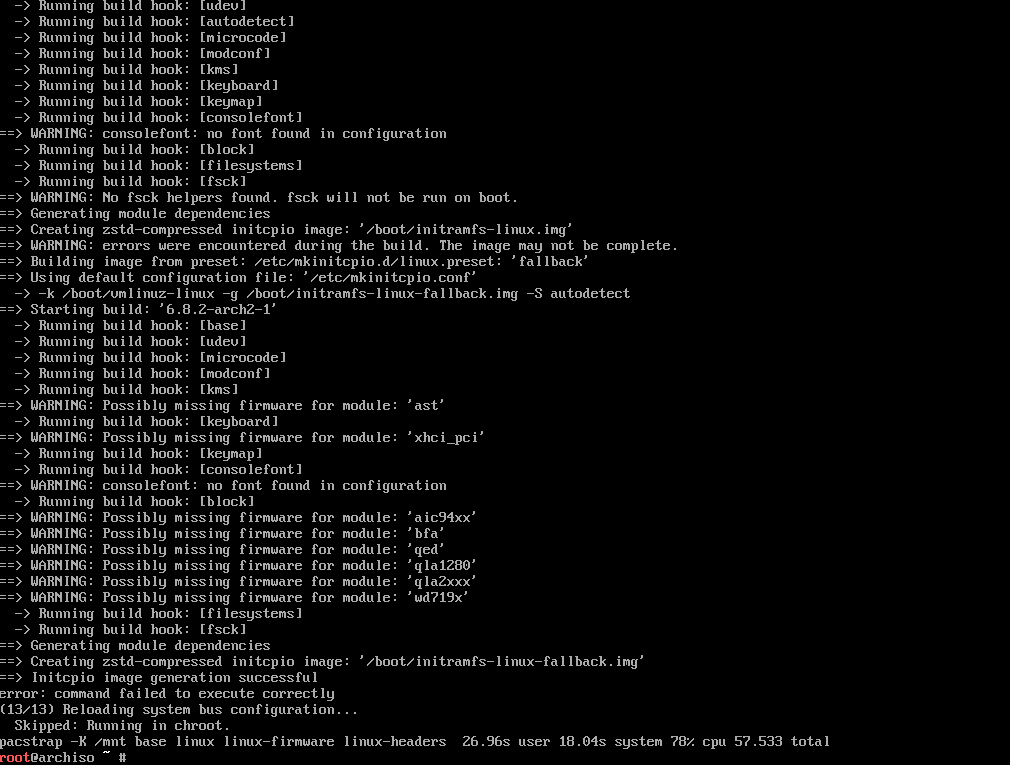I've been trying to install Arch on an old laptop for the past few days but for some reason it will not shut down if I'm using any kernel above version 6.7. It goes all the way through and gets to Reached target: System Power Off but then just sits there and never actually powers down. I waited 30 minutes in case it did something and it never did. I don't believe there is anything useful in the journalctl output as there's nothing after Reached target System Power Off but I'll paste it here in case: https://text.is/4KNL
I tried the shutdown troubleshooting steps from here: https://freedesktop.org/wiki/Software/systemd/Debugging/
The debug shell is no help as I can't access it once it hangs, and since it never finishes shutting down the logging script won't help. reboot -f and poweroff -f both work which made me think it wasn't a kernel issue, however it works fine using the linux-lts kernel. Because of this I tried manually downgrading to a few standard kernel versions from 6.6, 6.7 and 6.8 and only the ones above 6.7 had this issue. Specifically the latest lts version (6.6.23 at the time I tested) worked fine, 6.6.9 (the last 6.6 version in the main branch) worked fine, 6.7.arch1-1 and above didn't.
Weirdly I don't have any issues with the installation media (currently using the ones from 29th March and 1st April). I also tried Opensuse Tumbleweed which I believe is on the same kernel version and had no issues so it seems to be Arch specific. I also tried linux-zen in case that had any difference but it didn't help.
I have tried several re-installs with both legacy and UEFI boot, mostly minimal installs (base, linux, linux-firmware, linux-headers and nano). Since the live iso works I also tried installing all the packages from that but it still didn't work.
I'm completely out of ideas at this point. I can't see anything obvious in the kernel 6.7 changelog, but then I don't really know enough to know what to look for there. I know for now I can keep using the lts kernel but presumably at some point that will be upgraded to a version above 6.7 so that doesn't seem like a good long term solution, I'd also really like to know the root cause behind this as its been bugging me for days! The laptop is an Acer aspire E15 with an Intel 6500U (I have tried with the Intel-ucode package installed) and an Nvidia Geforce 920M.
Edit: somehow installing kde plasma has fixed the issue



Is that a subtle dig at Microsoft and their 5 billion different versions of Teams?